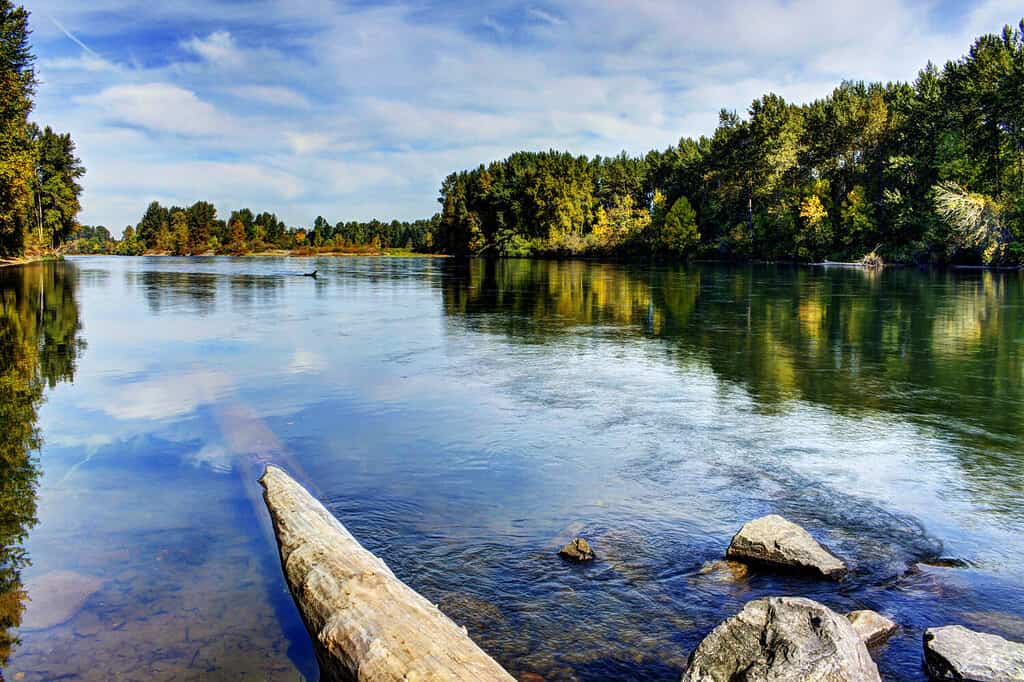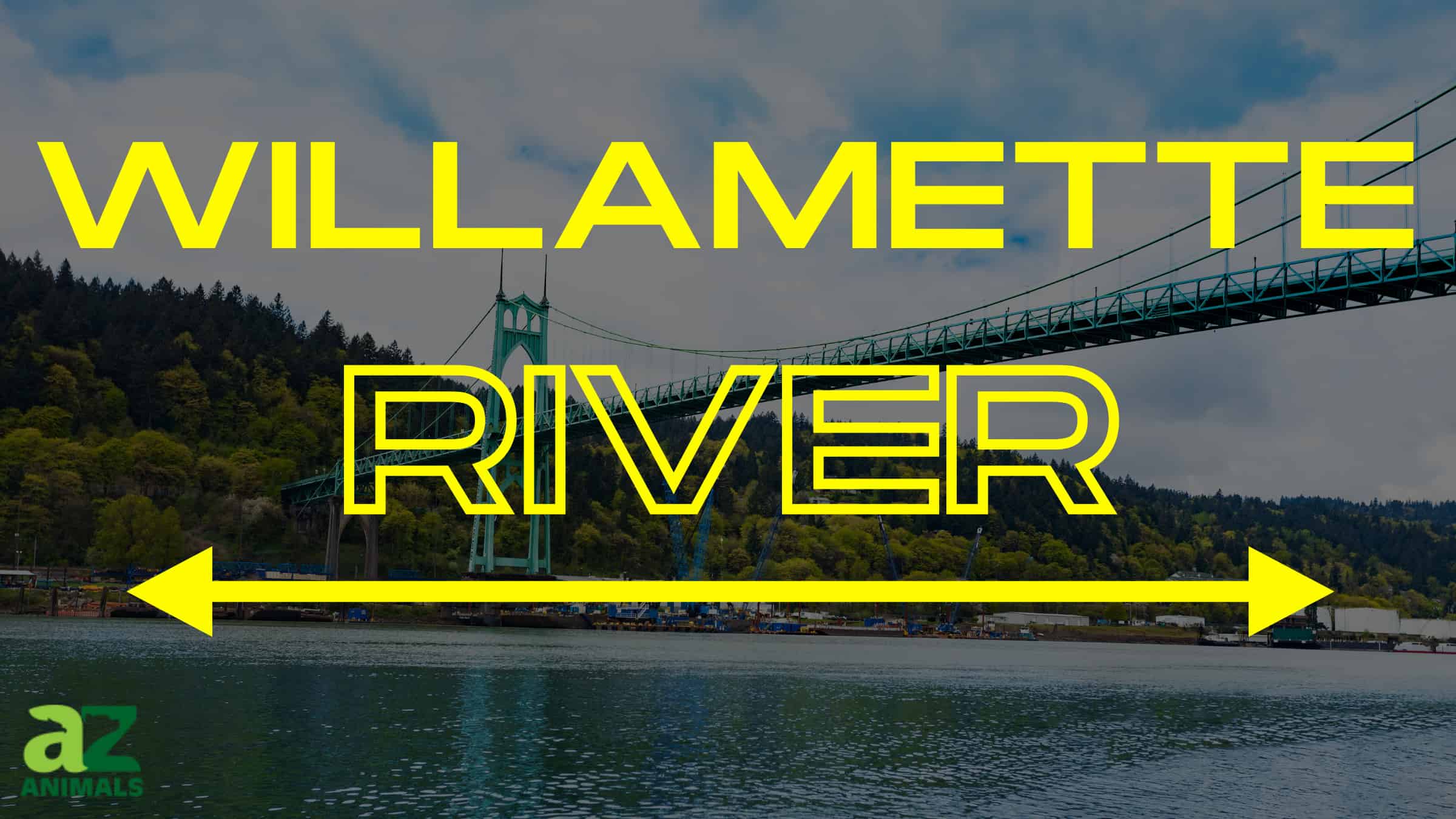The state of Oregon has beautiful landscapes. Wherever you turn, you’ll see that there are lush forests and green mountain ranges, as well as roaring rivers going through the state. One such river is the Willamette River. Located in the northwestern part of Oregon, the Willamette River is a beautiful body of water that flows into the Willamette Valley. Let’s take a look at how wide the Willamette River is at its widest point and other fun facts.
About the Willamette River

The Willamette River is 187 miles long and has a basin size of 11,478 square miles.
©Heather Elise Endicott/Shutterstock.com
The Willamette River is a tributary of the much larger Columbia River. About 15% of the Columbia River’s flow is the Willamette. Flowing between two mountain ranges in Oregon, the Willamette River is entirely in the northwestern part of the state. The Willamette River and the various tributaries that it has flows into the Willamette Valley, which is where most of Oregon’s population lives.
How Wide is the Willamette River?

The major cities that the Willamette River goes through include Eugene, Salem, and Portland.
©Sean Pavone/iStock via Getty Images
The Willamette River forms around Eugene, OR. The confluence of the Coast Fork Willamette River and the Middle Fork Willamette River create the Willamette River. It then flows northward to the Columbia River near Vancouver WA. As it flows northward, the width of the river usually ranges between 600 to 1,900 feet. There are parts where it widens to 2,000 feet. Moreover, the Willamette River flows northward for 187 miles.
Wildlife Around the River

The Willamette River has a total of 12 tributaries.
©Heather Elise Endicott/Shutterstock.com
Like all rivers in Oregon, the Willamette is no different when it comes to wildlife. Wildlife is abundant in the surrounding areas of the river. However, deforestation has decimated the forested areas around the Willamette River. These changes have threatened the wildlife that lives in the area, including the many plants and trees that once stood there. Some of the trees that still exist include Oregon ash, willow, big-leaf maple, and black cottonwood.
In terms of animals, there are 31 native species of fish and 29 non-native species in the river. Some of them include rainbow trout, various species of salmon, sculpin, sturgeon, lake trout, largemouth, and carp. Other animals that you may find along the Willamette River include the beaver and river otter, as well as a whopping 154 bird species like the osprey and harlequin duck.
How Does the Willamette River Compare to Others?
In terms of where the Willamette River lies comparatively to other rivers in Oregon, let’s take a look at how wide these other rivers are.
- Columbia River: 14 miles at its widest point.
- Rogue River: 80 feet
- Hood River: Average 5 miles
Conclusion
And there you have it, that is how wide the Willamette River is at its widest point. It may not be the largest river in Oregon, but it is certainly one of the most beautiful in the state. Moreover, most of the population in the state lives near the Willamette River and its basin, the Willamette Valley. This means that the Willamette River is an important river for Oregonians.
Thank you for reading! Have some feedback for us? Contact the AZ Animals editorial team.








